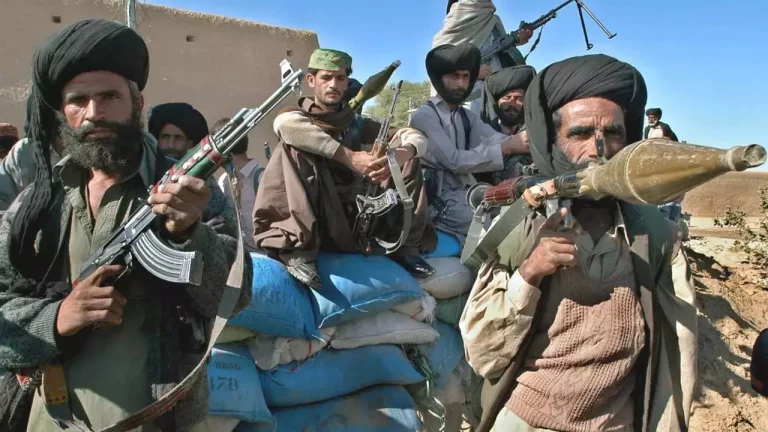Balochistan, the largest province of Pakistan, has a rich and complex history marked by its strategic significance and socio-political struggles. The region has long been at the center of conflict. Multiple insurgencies have been driven by the Baloch people’s aspirations for autonomy. They are also fueled by their grievances against the Pakistani state. Over the years, Balochistan’s landscape has become a battleground where issues of identity, economic marginalization, and geopolitical interests have intersected, shaping its volatile present.

A Brief Historical Context
The history of Balochistan dates back to ancient times, with Greek records mentioning the region as early as 650 BCE. Over centuries, it became a land of shifting sovereignties, serving as a conduit for trade and cultural exchange between Central Asia, South Asia, and the Middle East. During the colonial era, the British formally incorporated Balochistan into British India in the 19th century. They used it as a buffer zone. This was to safeguard their interests against Russian expansionism. This period saw the division of the region, with present-day Iranian Balochistan falling under Persia and the rest being administered under the British Raj.

As the British prepared to leave the subcontinent in 1947, the fate of Balochistan became a contentious issue. The princely state of Kalat, a significant part of Balochistan, initially declared independence. However, in 1948, Pakistan annexed the region, integrating it into the newly formed nation. This move was met with resistance, sparking the first Baloch rebellion led by Prince Agha Abdul Karim, who, along with other nationalist leaders, sought to establish an independent Baloch state. The Pakistani military swiftly suppressed this uprising, but it set a precedent for decades of unrest and a deep-seated mistrust between the Baloch people and the central government.
The Roots of Balochistan’s Conflict
The insurgencies in Balochistan have been fueled by a combination of political exclusion, economic exploitation, and militarized repression. The province is rich in natural resources, including vast reserves of natural gas, coal, and minerals. However, the benefits of these resources have largely bypassed the local Baloch population, who feel that the wealth extracted from their land is unfairly diverted to Pakistan’s more developed regions, particularly Punjab. This economic marginalization has remained a significant driver of resentment.
The development of Gwadar Port, a Chinese-funded initiative launched in 2001, was intended to transform Balochistan into a hub of international trade. However, the project has largely excluded the local population from its economic benefits, with the federal government retaining control over its administration and employment opportunities being given to non-Baloch workers. This has only exacerbated the perception that Balochistan is being treated as a colony by Islamabad, rather than an equal partner within the federation.
Adding to the grievances is the Pakistani state’s heavy-handed approach in dealing with Baloch dissent. Successive governments have relied on military operations to crush insurgent movements, leading to widespread human rights violations, including enforced disappearances, extrajudicial killings, and mass displacement. The systematic targeting of Baloch activists, students, and political leaders has deepened the anger against the Pakistani establishment. Instead of quelling the rebellion, these tactics have fueled a cycle of violence that continues to this day.
The Evolution of the Baloch Insurgency
Over the decades, several militant groups have emerged, each advocating different levels of autonomy or outright independence for Balochistan. The Baloch Liberation Army (BLA), Baloch Republican Army (BRA), and Balochistan Liberation Front (BLF) are among the most prominent insurgent organizations operating in the region. These groups have carried out numerous attacks against Pakistani security forces, infrastructure projects, and even Chinese nationals associated with the China-Pakistan Economic Corridor (CPEC).
Recently, the insurgency has witnessed a surge in sophisticated and coordinated attacks. One of the most alarming incidents occurred on March 11, 2025 when Baloch insurgents hijacked the Jaffar Express in Balochistan. Baloch rebels killed around 200 Pak army personnel. The brazen nature of the attack underscored the increasing capabilities of militant groups and the failure of the state to secure critical infrastructure. Just days later, a suicide bomber targeted buses carrying security forces in Naushki, killing at least seven individuals, including five officers. The Baloch Liberation Army (BLA) claimed responsibility for the attack, further signalling that insurgent groups are becoming more emboldened in their operations.

The emergence of BLA-Azad is one of the key developments in Baloch militancy. This faction has displayed more strategic sophistication in its operations. Unlike earlier militant groups that primarily relied on hit-and-run attacks, BLA-Azad has adopted more urban guerrilla warfare tactics, making their activities harder to suppress. The resurgence of such groups indicates that Pakistan’s counterinsurgency measures have failed. These measures continue to rely on force rather than addressing the underlying grievances of the Baloch people.
Regional and Geopolitical Implications
Balochistan’s insurgency is not just an internal issue for Pakistan; it has broader implications for regional stability. The unrest in Pakistani Balochistan has often spilled over into Iran’s Sistan and Baluchestan province, which has a significant Baloch population. Both countries have accused each other of harbouring insurgents, leading to occasional cross-border skirmishes and diplomatic tensions.
The instability in Balochistan also poses challenges for China’s Belt and Road Initiative, as the province is a critical part of the China-Pakistan Economic Corridor (CPEC). Attacks on Chinese workers and projects have raised concerns in Beijing about the security of its investments in Pakistan. While China has pressured Islamabad to provide better security for its projects, the persistent violence has cast doubt on the long-term viability of these economic plans.
Additionally, Pakistan has repeatedly accused India of supporting Baloch separatists, a claim that India has denied. The issue has been a major point of contention between the two nuclear-armed neighbours, with Pakistan alleging that India’s Research & Analysis Wing (R&AW) is fueling the insurgency to destabilize the country. If these allegations were ever substantiated, tensions between the two nations would escalate significantly. This would also further complicate the security landscape of South Asia.
Path Forward, If There’s Any
Pakistan’s failure in Balochistan is not merely poor governance—it represents a deliberate campaign of oppression, economic exploitation, and systematic erasure of Baloch identity. Instead of addressing legitimate grievances, Islamabad has treated the province like a colony. It has stripped it of its resources, suppressed political movements, and brutally silenced dissent through enforced disappearances and extrajudicial killings. The hypocrisy is glaring—while Pakistan often internationalizes issues related to Kashmir, it refuses to acknowledge the atrocities it commits against its own people in Balochistan.
Although there are parallels between the unrest in Balochistan and the turmoil in Pakistan-occupied Jammu & Kashmir (POJK), the underlying causes differ. In both regions, people suffer from state neglect and human rights abuses; however, Balochistan’s conflict is deeply rooted in historical economic exploitation and cultural marginalization, while POJK stems primarily from territorial disputes and geopolitical tensions. Both cases, however, illustrate how Islamabad prioritizes military dominance and expansionist policies over the welfare of its own citizens. Just like the Kashmir issue, the Baloch problem does not seem to be going in favour of Pakistan.
For Pakistan, Balochistan is seen as nothing more than a resource to be exploited. When the local population resists, they are labelled “terrorists” and subjected to harsh, indiscriminate force. In reality, Balochistan is not just an internal matter—it is an occupied land where its people have been denied justice for decades. The international community must no longer ignore these grave human rights abuses, and global voices should demand accountability. True lasting peace can only be achieved through genuine political dialogue, equitable development, and respect for the rights of the oppressed—a solution Pakistan has yet to embrace.

